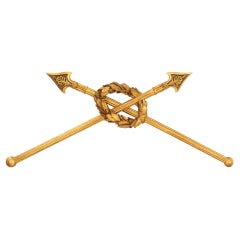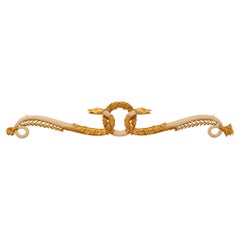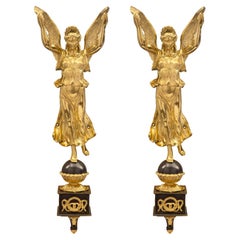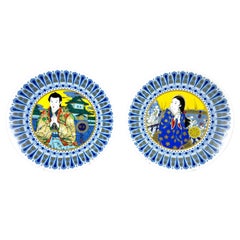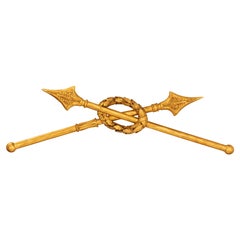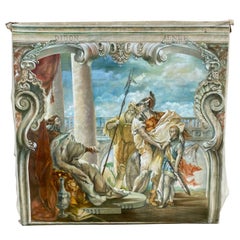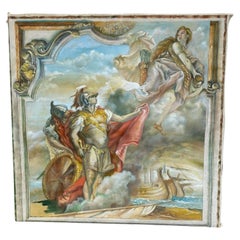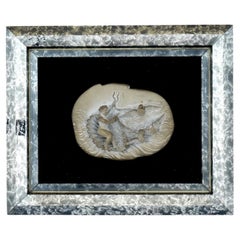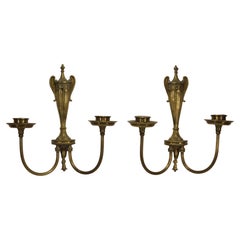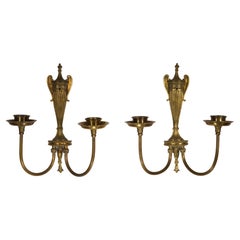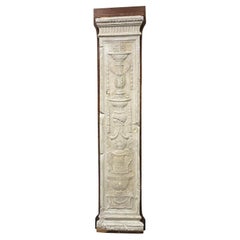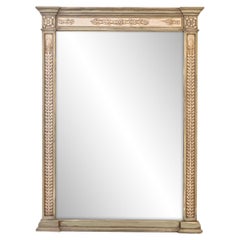Neoclassical Wall Decor
Antique 19th Century Italian Neoclassical Decorative Art
Wood, Giltwood
Antique 19th Century Italian Neoclassical Wall-mounted Sculptures
Wood, Giltwood
Antique 19th Century French Neoclassical Wall-mounted Sculptures
Bronze, Ormolu
Vintage 1970s Japanese Neoclassical Decorative Art
Porcelain
Antique 19th Century Italian Neoclassical Decorative Art
Giltwood
Vintage 1930s European Neoclassical Paintings
Paint
Vintage 1930s European Neoclassical Paintings
Paint
Antique 19th Century European Neoclassical Decorative Art
Lava
Early 20th Century American Regency Candle Sconces
Bronze
Early 20th Century American Regency Candle Sconces
Bronze
Recent Sales
Antique Mid-19th Century French Neoclassical Decorative Art
Plaster, Walnut
Antique Mid-18th Century French Neoclassical Wall Mirrors
Mirror, Wood
Vintage 1950s French Neoclassical Wall Mirrors
Giltwood
Vintage 1960s Italian Neoclassical Revival Paintings
Brass
Vintage 1950s Italian Neoclassical Decorative Art
Bronze
Antique Early 19th Century Italian Neoclassical Wall Brackets
Giltwood
Vintage 1940s French Neoclassical Wall Lights and Sconces
Bronze
Early 20th Century French Neoclassical Prints
Paper
Early 20th Century French Neoclassical Prints
Paper
Vintage 1920s French Neoclassical Wall Lights and Sconces
Giltwood
People Also Browsed
Antique Late 19th Century Chinese Beds and Bed Frames
Lacquer, Wood
Antique 1880s Japanese Meiji Ceramics
Porcelain
21st Century and Contemporary Indian Modern Tableware
Iron
21st Century and Contemporary Indian Modern Tableware
Iron
Antique 1880s English Victorian Inkwells
Sheffield Plate
21st Century and Contemporary Unknown Louis XVI Loveseats
Wood
Vintage 1970s European Post-Modern Lounge Chairs
Velvet
Antique 19th Century Chinese Beds and Bed Frames
Gold Leaf
Mid-20th Century Mexican Folk Art Animal Sculptures
Brass, Copper
Mid-20th Century European Art Deco Wall-mounted Sculptures
Copper
Antique Late 19th Century Chinese Chinese Export More Asian Art, Objects...
Wood
20th Century Unknown Neoclassical Revival Figurative Sculptures
Bronze
Antique Early 19th Century French Restauration Beds and Bed Frames
Bronze
Antique 19th Century Chinese Qing Cabinets
Brass
Mid-20th Century Spanish Mid-Century Modern Wall Mirrors
Copper
Antique Early 19th Century Swedish Gustavian Sideboards
Pine
Neoclassical Wall Decor For Sale on 1stDibs
How Much is a Neoclassical Wall Decor?
A Close Look at Neoclassical Furniture
Neoclassical design emerged in Europe in the 1750s, as the Age of Enlightenment reached full flower. Neoclassical furniture took its cues from the styles of ancient Rome and Athens: symmetrical, ordered, dignified forms with such details as tapered and fluted chair and table legs, backrest finials and scrolled arms.
Over a period of some 20 years, first in France and later in Britain, neoclassical design — also known as Louis XVI, or Louis Seize — would supersede the lithe and curvaceous Rococo or Louis XV style.
The first half of the 18th century had seen a rebirth of interest in classical antiquity. The "Grand Tour" of Europe, codified as a part of the proper education of a patrician gentleman, included an extended visit to Rome. Some ventured further, to sketch the ruins of ancient Greece. These drawings and others — particularly those derived from the surprising and rich archaeological discoveries in the 1730s and ’40s at the sites of the Roman cities of Pompeii and Herculaneum — caused great excitement among intellectuals and aesthetes alike.
Neoclassical furniture is meant to reflect both grace and power. The overall appearance of neoclassical chairs, tables and cabinetry is strong and rectilinear. These pieces are, in effect, classical architecture in miniature: chair and table legs are shaped like columns; cabinets are constructed with elements that mirror friezes and pediments.
Yet neoclassicism is enlivened by gilt and silver leaf, marquetry, and carved and applied ornamental motifs based on Greek and Roman sculpture: acanthus leaves, garlands, laurel wreaths, sheaves of arrow, medallions and chair splats are carved in the shapes of lyres and urns. Ormolu — or elaborate bronze gilding — was essential to French design in the 18th and 19th centuries as a cornerstone of the neoclassical and Empire styles.
As you can see from the furniture on these pages, there is a bit of whimsy in such stately pieces — a touch of lightness that will always keep neoclassicism fresh.
Find antique neoclassical furniture today on 1stDibs.
Read More
New York’s Hirschl & Adler Showcases the American Workmanship and Design Panache of Neoclassical Treasures
The gallery's latest exhibition proves that museum-quality pieces entice and inspire, whether in traditional or more modern interiors.
Susanna Salk’s Favorite Designers Show Us How to Play with Patterns
Taking us on a whirlwind tour of spaces that use charming prints with aplomb, the interiors expert makes a compelling case for ditching staid solids when tackling your next decorating project.
